
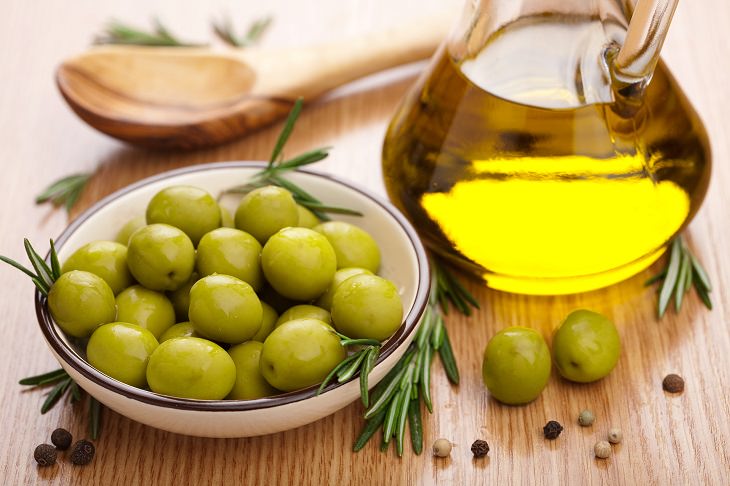
Studies have been conducted on the purity of olive oil to the point that consumers don’t always know if they’re purchasing a legit product. We know it’s good for us, but things can start to get confusing when it’s time to buy some. For example, some extra virgin olive oils are cut with other oils such as soy or sunflower.
You don’t always know what you’re getting, but there is a way to separate the reals from the frauds – your senses!
According to olive oil expert Katerina Mountanos, you should start with the smell and then move onto the taste. A quality olive oil should have a scent like fruits, grass, herbs, or plants.
Here’s what she suggests you should do:
- Pour a bit of the oil into a small glass and cover the top with your hand.
- Swirl the oil around in the glass, making sure that your hand is warming it gently.
- Remove your hand and have a quick sniff.
You’ll want to look for notes of tomato, almonds, fruits, or something peppery such as arugula. No smell, a waxy scent, and a vinegary scent are bad signs. However, the ultimate test lies in tasting it.
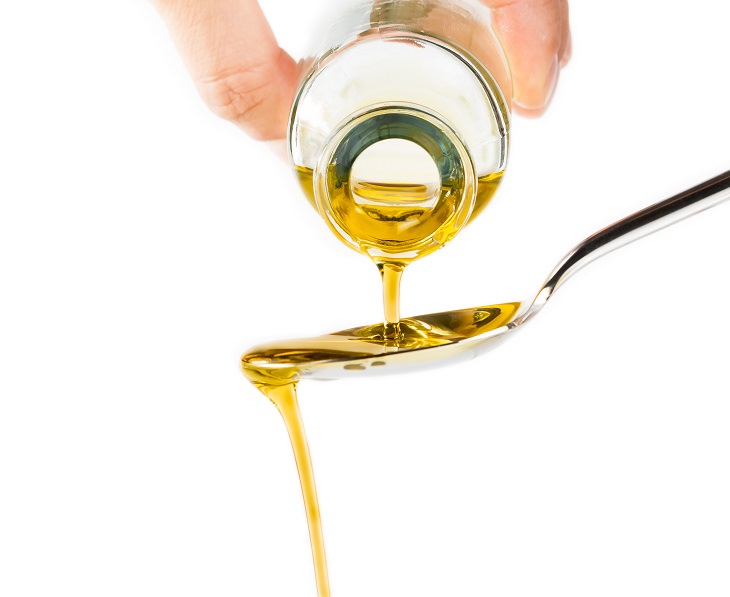
Mountanos has developed a science to tasting olive oil that involves a bit of swirling, inhaling, and coughing. If you’re down, here’s what to do:
- Swirl it around in the glass and then take a tiny sip.
- Inhale a little bit of air through your lips.
- Swish the oil around, and then swallow it.
It should taste like plants, but according to Mountanos, the kicker is that you will cough after experiencing a bitter aftertaste in the back of your throat. If you do, this is the sign of a great-quality, real-deal, extra virgin olive oil. She says that if the cough or other weird feeling in your throat doesn’t appear, you either have an oil that’s rancid or a low-quality imposter. There’s even a chance that it’s not even olive oil, let alone extra virgin.
Once you have found the perfect olive oil, you want to make sure that you store it in a cool, dark area where heat and light cannot destroy it. If you notice an off-putting odor, get rid of it.
A study from 2011 by the University of California-Davis concluded that 70% of olive oils sold in the U.S. did not meet the standards for being classified as extra virgin. Now you have your own way to test!
Source: tiphero
Images: depositphotos

Fake Olive Oil: Here's How You Can Spot It
If you want to know whether the olive oil you have bought is real or an imposter, here's how you can tell!

Fake Olive Oil: Here's How You Can Spot It...
If you want to know whether the olive oil you have bought is real or an imposter, here's how you can tell!

WARNING: These 10 Common Flowers Are Poisonous!
Flowers add an array of color to your garden, but some of these are actually quite toxic. Here are 10 of that you should be aware of.

If You Suffer from Back Pain, You Must Read This...
If you have back pain, the following information is like a gift from God. This is how you can relieve back pain effectively.

Do You Have Arthritis? These Tips Can Help Ease the Pain
Though you can’t always prevent arthritis, there are some things that you can do to help reduce your symptoms if you have it. Here are 8 of them!

Feeling Down? These 10 Foods Can Help Improve Your Mood
The food that we eat can help increase our moods and get rid of depression. Find out more here!

Useful & Professional Tips On Raising a Bilingual Child
Teaching your child 2 languages is one of the greatest gifts you can give them as a parent. Find out how to do it easy and effectively.

Wearing a Face Mask Irritates Your Skin? 10 Essential Tips
In this article, we’ve collected 10 essential tips that will soothe and protect your skin from mask-related irritation and breakouts...
 2:15
2:15
How to Win at Every Tic Tac Toe Game...
Unlock the secrets to mastering Tic Tac Toe with our latest video guide.

If You Drive an Automatic, You Should Know These Tips
In the following article, you’ll find a brief explanation of how an automatic transmission works, learn about the different types available on the market today, and get tips to help you drive more correctly.

Experts Warn: Why I Don't Chew Gum Anymore
Do we chew gum and eat microplastics at the same time?

Ink Stain Removal Made Easy With 9 Ultimate Home Methods
Don't throw out you ink-stained clothing, instead, try one of these 9 at-home methods of ink removal to revive your garments

5 Essential Training Skills You Must Teach Your Dog!
Dog training is a lifelong process, but some skills are more important than others. Here are the most important dog training skills.
 2:41
2:41
Stop Overpaying! Make Your Own Wiper Fluid On a Budget
Tired of pricey wiper fluid? Learn to make your own, safely.

Guide: How to Remain Comfortable on a Flight
Whether you’re traveling for business or leisure, these tips will help you fly smarter and healthier.
 17:03
17:03
How to Tell If the Soil in Your Garden Is Depleted
Over time, the soil in your garden will become depleted. Here's how you can tell if it's time to replenish the soil in your garden.

How to Use Essential Oils Without An Expensive Diffuser!
Do you love essential oils, but you’re not ready to spend a lot of money on them or a diffuser? This article will help!

Are You Guilty of These Everyday Posture Mistakes?
These mistakes are ruining your posture. Here’s how you can fix them!

Keep Your Home Spotless with This Natural Cleaner
This article will show you how you can make an natural all-purpose cleaner that will leave your house clean and smelling fresh.

The Surprising Uses of Lemon Salt Outside the Kitchen
Here’s a look at some unexpected ways to use lemon salt beyond the kitchen.

Home Guide: How to Stretch Your Carpet
Whether addressing slack areas in aging carpet or laying fresh carpeting, we've outlined carpet stretching methods that deliver professional-quality results at home.

15 Differences between Men and Women That Explain a Lot
Discover surprising biological differences between men and women, which can explain many things you thought about both sexes.

18 Reasons To Keep Hydrogen Peroxide At Home
Hydrogen peroxide is one of the best substances you can keep around the house, and this is because it has many different uses. In fact, here are 18 of them.

10 Natural Home Remedies EVERYONE Should Know!
Not Feeling well? We recommend that you think outside the box, or in this case outside the medicine cabinet with the following 10 effective natural medicines!
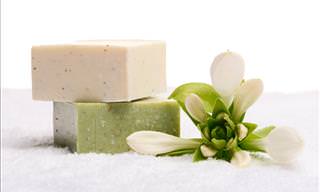
I Had No Idea that a Bar of Soap Could Be Used Like This!
Here are 6 innovative ways to use a bar of soap.

This Is How FBI Agents Protect Their Homes From Intruders
FBI agents have let us in on the secrets they employ to protect their own homes. here are 11 methods that FBI agents use to protect their homes.

15 Seniors Who Still Know How to School Us in Life
These elders have some interesting advice to share...
 3:23
3:23
Relieve Joint and Back Pain with Desk Ergonomics Tips
Do you know how to set up your desk and how to work at the computer without wreaking havoc on your joints and spine? This video shows

Important! These Everyday Objects Need to Be Cleaned!
There are certain things in our homes that we forget or don't even know we need to clean, so here are 15 everyday items that you should clean today.

10 Clever Laundry Additions For Crisp and Clean Results
The laundry boosters listed here will optimize your weekly laundry routine.
 12:15
12:15
Easy Tips for Growing Chamomile in Your Home Garden
Love drinking chamomile tea? Now you can grow the wonderful herb in your garden and make your own chamomile tea.

Color These Mosaics Your Way – Coloring Pages for All Ages
. If you already have some colored pencils or markers in various shades, you can print out the following 20 coloring pages we’ve collected for you here.
 8:26
8:26
You Must Know These Tips for Growing Healthy Plants
With these key tips, even complete beginners will be able to grow healthy and beautiful plants at home!
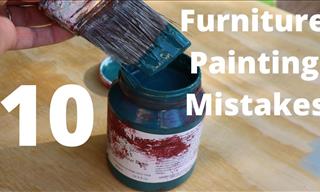 18:55
18:55
How to Avoid 10 Common Furniture Painting Mistakes
See this video about common furniture painting mistakes before you decide to repaint your furniture

14 Terrific Charts to Satisfy Your Thirst For Knowledge
If reading long articles on a specific topic isn’t your preferred way to spend your pastime, these clever charts and maps might be just what you need.

5 Reusable Alternatives to Kitchen Disposables
Here are 5 alternatives for single-use sponges and paper towels in your kitchen.

5 Terrific Ways to Use Carrot Oil to Treat Hair and Skin
Carrot oil has many other uses that can actually benefit your body much more.

Think its Healthy? These Foods Are Ultra-Processed
These foods are more processed than you think.

13 Common Refrigerator Mistakes and How to Avoid Them
Mistakes you didn't know you were making with your fridge.

Things Considerate Shoppers Never Do at the Grocery Store
Here are 15 things considerate shoppers avoid doing at the store.

How To Keep Your Bread Fresher For That Much Longer...
if you're wondering how to make your bread last longer, read the following article and learn about 5 different methods of doing just that!
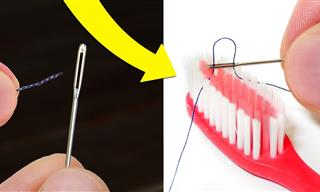 9:01
9:01
These Genius Old Life Hacks Have Passed the Test of Time
These age-old life hacks were once used by our grandparents. Turns out, they can still make our life easy.

15 Things in Your Home You Need to Throw Away Right Now!
In this article you'll find 15 items that you need to throw away as soon as possible as they might be making you sick!

Treat Motion Sickness With These Natural Remedies and Tips
Here are 6 natural remedies and 7 effective tips that will help you eliminate the feeling of motion sickness.

19 Household Items You Need to Change Now
It's high time you change these household items.

11 Unhealthy Signs in Your Dog That You Shouldn't Ignore
If you're a dog owner, it is in your duty to be observant toward your dog's health. Here are the warning signs you should watch out for.

6 Home Security Mistakes to Stop Making Today
These security mistakes make you home an easy target for intruders. This is how to avoid them.
To enable your Ad-Free Subscription, please fill the fields below
Your subscription was successful, now you can enjoy an ad-free experience!! Note: To make sure you get no ads, please make sure to log in to your account. If you are logged in already, then refresh the page. The subscription can be cancelled at any time.


